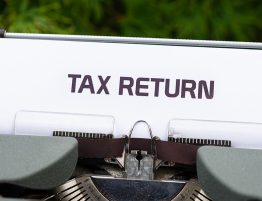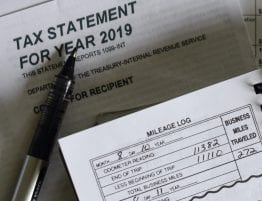The IRS announced in a notice that the optional 2020 standard mileage rate for business use will be down to 57.5 cents per mile from the earlier 58 cents per mile, from January 1, 2020. This will include costs of operating an automobile (including cars, vans, pickups, and panel trucks) for charitable, medical and moving expense purposes.
Since 2017, this is the first time since the rate has reduced. SHRM shares further details about the Standard Mileage Rate 2020 and how the reduction will impact businesses:
“‘The IRS business mileage standard is a go-to reimbursement method for many businesses and individuals,’ said Craig Powell, CEO of Motus, which makes software that helps companies manage mobile workers. The standard rate offers ‘a tax-free threshold that U.S. employers can reimburse up to without incurring taxes or defensibly demonstrating the business expense above the safe harbor rate.’
Under-reimbursements may result in lawsuits brought by mobile workers claiming their employers failed to cover their out-of-pocket costs for business-related driving, according to Motus.
2020 Changes
For 2020, standard mileage rates for the use of cars, vans, pickups or panel trucks will be:
- 5 cents per mile driven for business use, down from 58 cents in 2019.
- 17 cents per mile driven for medical or moving purposes, down from 20 cents.
- 14 cents per mile driven in service of charitable organizations, which is unchanged.
Notice 2020-05 also notes that, for cars an employee uses for business, the portion of the standard mileage rate treated as depreciation will be 27 cents per mile for 2020, up from 26 cents per mile in 2019.
While the standard mileage rates for business, medical and moving purposes are based on annual changes in the costs of operating an automobile, the charitable rate is set by statute.
According to Motus, which supplies the IRS with data on business vehicle use, significant trends factoring into the 2020 rate decrease were lower national average fuel prices and better fuel economy in new vehicles, although these savings were partially offset by factors such as slightly higher insurance prices due to costly repairs to more-expensive vehicle technology and increased labor costs.
‘Taxpayers always have the option of calculating the actual costs of using their vehicle rather than using the standard mileage rates,’ the IRS explained. They will need to document their mileage adequately, the agency said.
Since the standard rate ‘doesn’t account for driving costs that fluctuate based on geography and time of year, businesses using the rate to reimburse mid- and high-mileage workers are likely to give reimbursements that do not reflect actual driving costs,’ Powell said. ‘By treating all employees’ expenses as the same regardless of location or individual situations, reimbursement using the IRS rate creates winners and losers by over- or under-reimbursing them for their costs.’
Updated Rules
On Nov. 14, the IRS issued Revenue Procedure 2019-46, which updated standard mileage rules to reflect provisions of the Tax Cuts and Jobs Act (TCJA) that took effect in 2018. The TCJA suspended miscellaneous itemized deductions and deductions for moving expenses except for members of the armed forces on active duty whose expenses are related to a permanent change of station. The suspension is effective for tax years 2018 through 2025.
The revenue procedure clarifies that during the suspension period, employees may not claim a miscellaneous itemized deduction on their tax returns for parking fees and tolls attributable to their use of an automobile for business.
FAVR Plans
For businesses that choose not to use the standard mileage rates, Notice 2020-05 sets maximum vehicle expenses under a Fixed and Variable Rate (FAVR) allowance plan, in which employees who drive their own vehicles can receive tax-free reimbursements from their employers for fixed vehicle costs (such as insurance, taxes and registration fees) and variable vehicle expenses (such as fuel, tires, and routine maintenance and repairs).
Under a FAVR plan, the cost of the vehicle may not exceed a maximum amount set by the IRS each year. For 2020, vehicle costs may not exceed $50,400 for automobiles, trucks and vans, unchanged from 2019.
An advantage of using a FAVR plan to reimburse employees is that ‘in locations with higher automobile operating costs, the FAVR allowance may be more than the standard mileage rate,’ according to payroll, benefits and compliance firm Justworks. ‘The disadvantage is that the employer must recalculate the FAVR allowance at least once every three months,’ as payments to employees must be made at least quarterly.
Revenue Procedure 2019-46 stated that an employer may give a FAVR allowance only to an employee who can produce adequate records showing at least 5,000 miles driven during the calendar year in performing services as an employee or, if greater, 80 percent of the employer’s estimate of annual business mileage used in calculating the FAVR allowance.
If the employee is covered by the FAVR allowance for less than the entire calendar year, the employer may prorate these limits on a monthly basis.”
Fill out the form for a free and confidential consultation.









